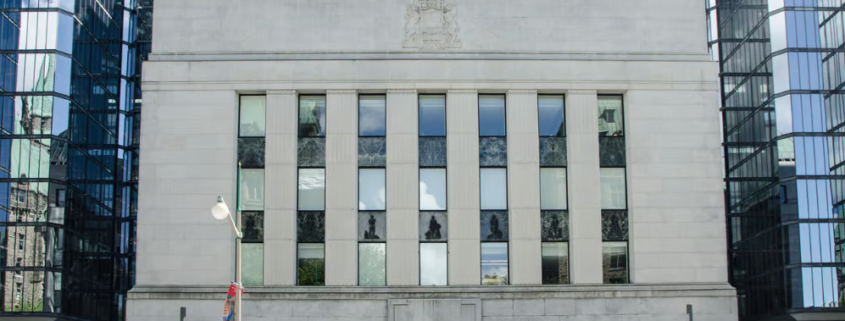The Bank also gave a significant update on its plans for future rate announcements
The Bank of Canada has announced a quarter-point hike to its benchmark policy rate, a move that marks its eighth consecutive rate increase and the first of 2023 – although it also indicated that it could be its last for some time.
The decision, announced on Wednesday morning, means that the central bank’s trendsetting rate now sits at 4.5%, having risen sharply in 2022 as the Bank fought to curb inflation that surged to its highest level in nearly 40 years in June.
The Bank said in its statement accompanying the decision that it expected to hold the policy rate at its current level as long as economic developments continue to evolve in line with its forecast.
The 25-basis-point hike comes as little surprise, with stronger-than-expected economic data and a resilient labour market dampening speculation that it could be set to hold fire on a rate jump in January.
In its last statement of 2022 the Bank had hinted that it could be ready for a pause on rate hikes in the coming months, indicating that it would “be considering whether the policy interest rate needs to rise further” to continue dialling down inflation.
That was a notable departure from its aggressive tone of previous statements, in which the Bank confirmed that further increases to the policy rate were effectively a foregone conclusion.
However, the economy saw a December employment surge, adding 104,000 jobs that month, and while inflation also ticked down, it’s still hovering at 6.3% – well above the central bank’s target rate of 2%.
The news will see borrowing costs rise once more for thousands of Canadian mortgage holders and would-be buyers, with monthly mortgage payments for borrowers on a variable rate having already spiked dramatically last year.
Leah Zlatkin, a mortgage broker and LowestRates.ca expert, told Canadian Mortgage Professional in advance of the central bank announcement that the way forward for borrowers depends largely on their individual circumstances and whether variable-rate holders can absorb the impact of a high-rate environment or would prefer to switch to a more stable fixed option.
Much attention will now be focused on how the economic outlook evolves before the Bank of Canada’s next decision, set to arrive on March 8.







 Maziar Moini, Broker of Record - Home Leader Realty Inc.
300 Richmond St. W., #300, Toronto, ON M5V-1X2
Maziar Moini, Broker of Record - Home Leader Realty Inc.
300 Richmond St. W., #300, Toronto, ON M5V-1X2



